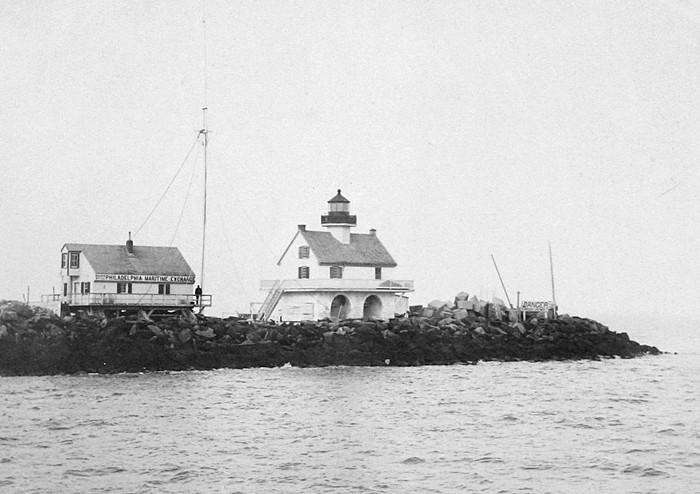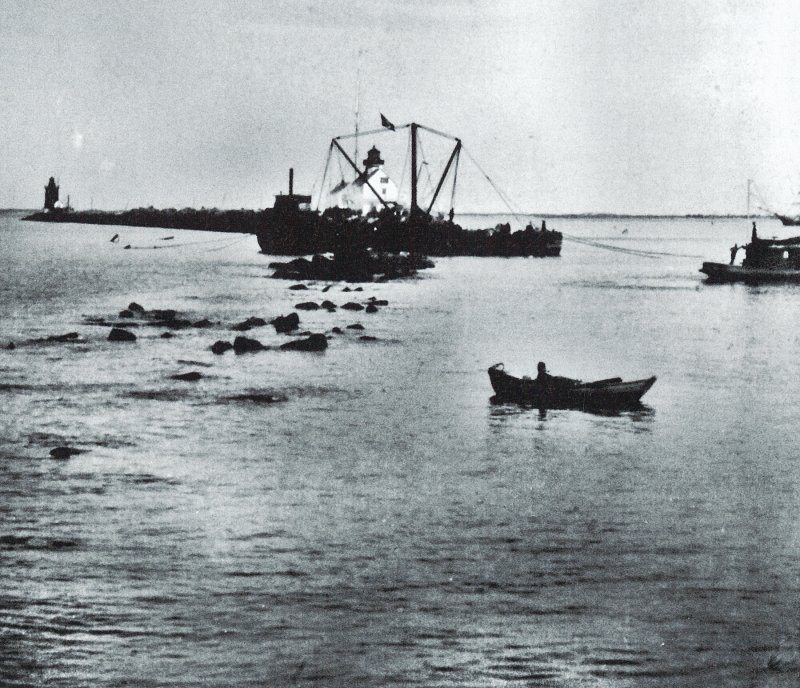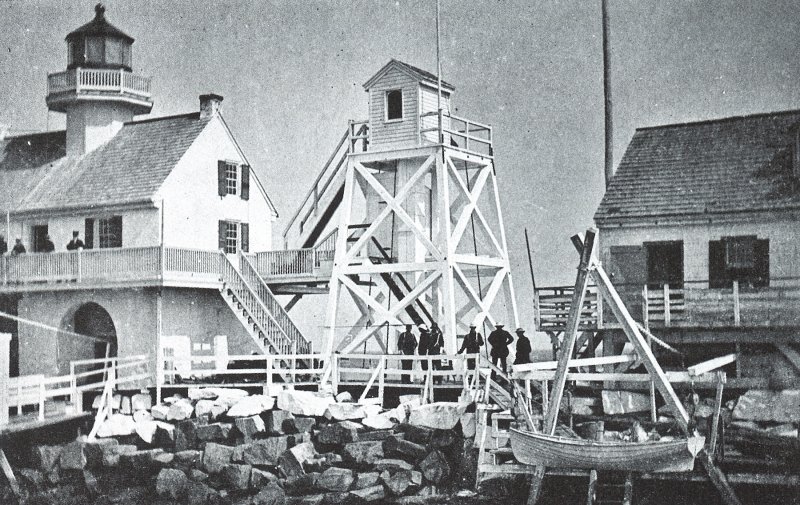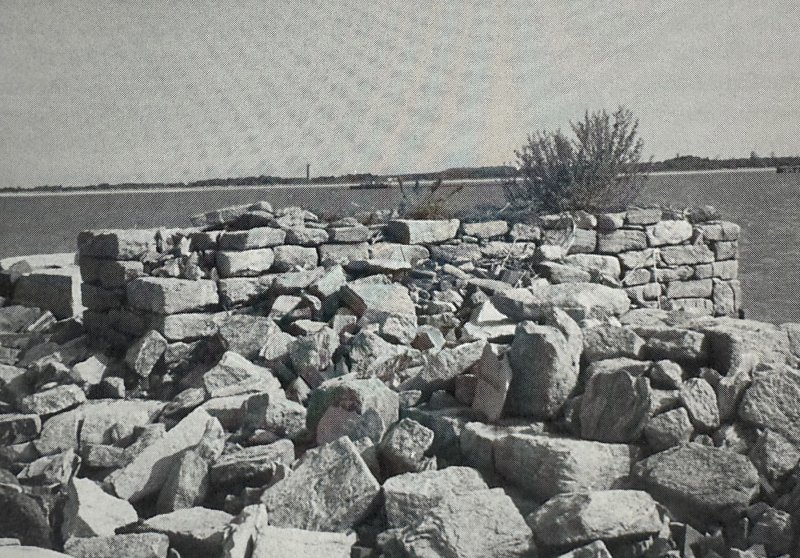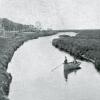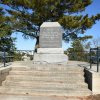Strickland Lighthouse stood on inner breakwater
Most people are aware of the red East End Lighthouse on the inner breakwater near the Point in Cape Henlopen State Park, but fewer know about the lighthouse that once stood on the west end. Built in 1849, the west-end light was also known as the Strickland Lighthouse. At the time it was built, the lighthouse sat at the west end of the breakwater; however, a design flaw necessitated the breakwater to be extended farther west. So, the actual location of the lighthouse is now closer to the middle of the breakwater.
It wasn’t the first light in that section of the breakwater, though, as a light had been exhibited starting around 1838 from the roof of the dwelling constructed on the breakwater to house the project’s superintendent. The lighthouse operated until 1903, when it was taken over by the Philadelphia Maritime Exchange as a reporting station. It stood until about 1960, but remnants of the foundation are still visible on the breakwater.
The lighthouse was named after William Strickland, who was the engineer of the breakwater project. Construction on the breakwater began in 1829, having received an appropriation for the project under the administration of President John Quincy Adams. The breakwater was built over a 40-year period, and Strickland remained with the project the entire time. The reason it took so long to build was because the window to work was only about five to six months per year, and work was suspended during the Civil War.
Due to Strickland’s pivotal role in the breakwater project, the lighthouse was named in his honor; however, some reports also note he may have actually designed the lighthouse too. Built by Nathan Middleton, the lighthouse had a stone foundation with brick above. The tower was supported by three piers of masonry of coarse gneiss with brick arches and brick superstructures. The arches were built to allow water to pass through.
According to “Guiding Lights of the Delaware River & Bay” by Jim Gowdy and Kim Ruth, the original lighthouse keeper was named Thomas J. Truxton. He earned $550 annually, about $50 more than many other keepers at the time. By 1907, the salary for the head keeper had risen to $700. An assistant keeper earned about $300 annually.
